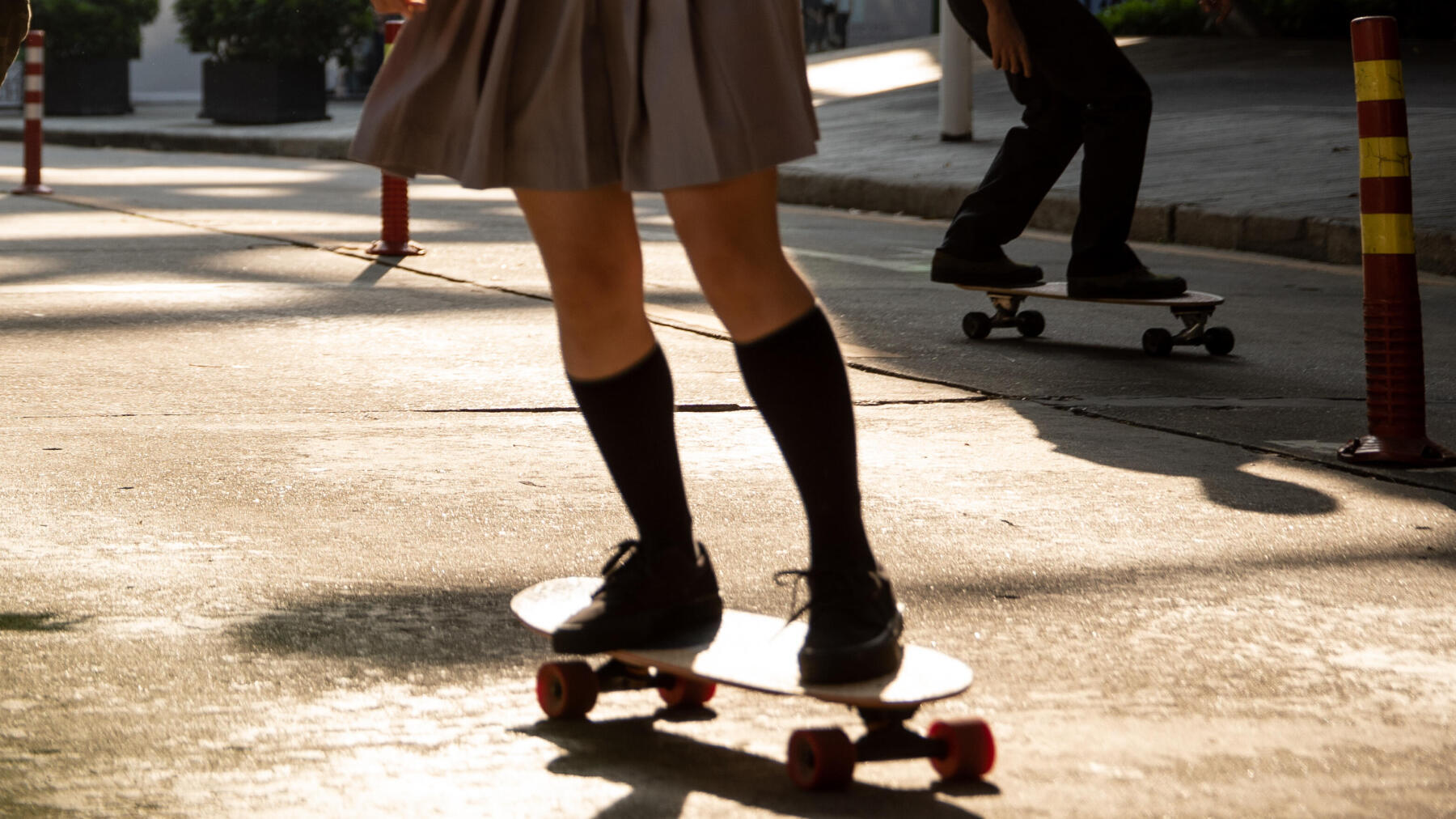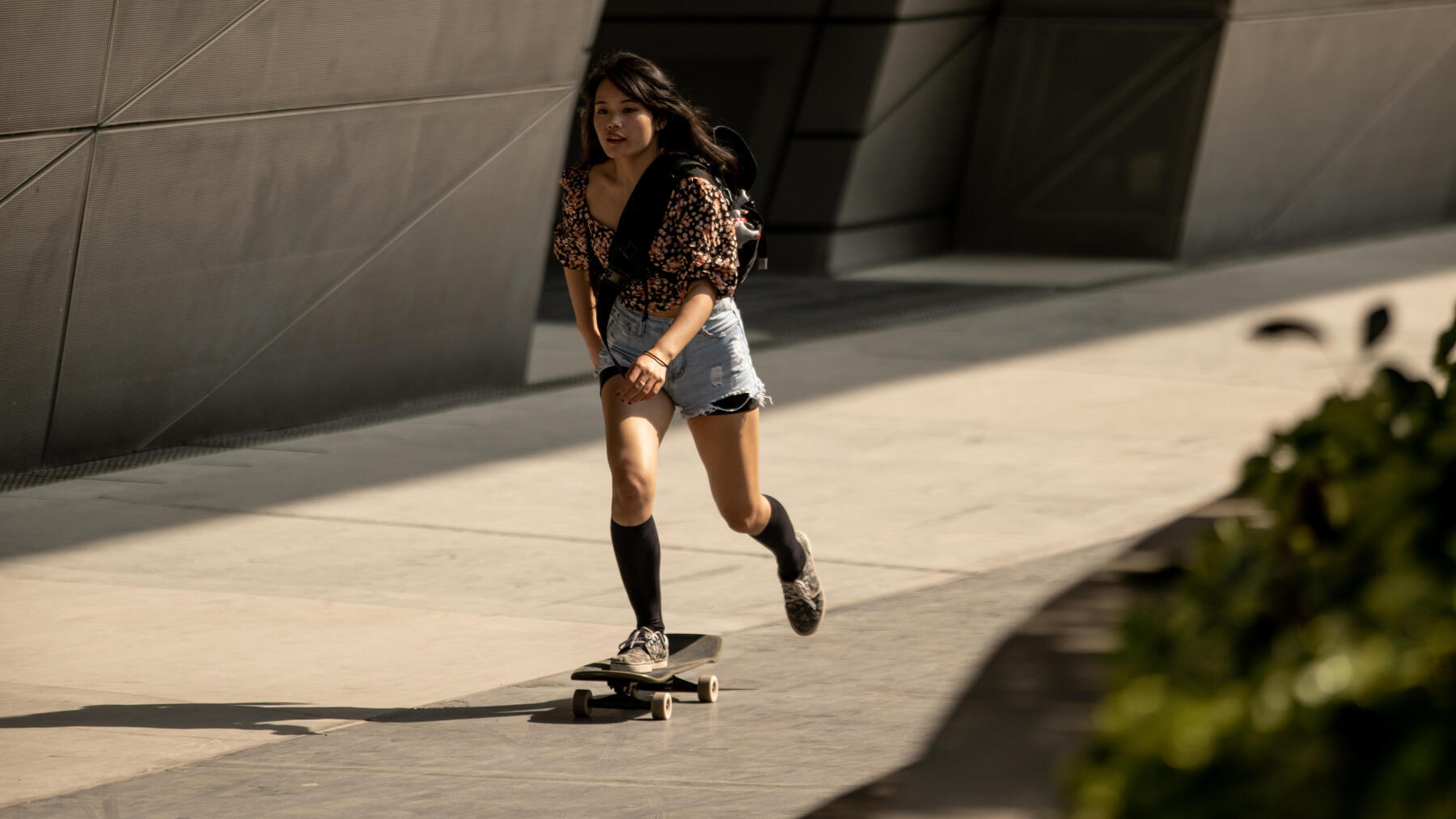Regular or goofy?
Before starting, you need to first find out what stance you're most comfortable with.
If you put your left foot forward with your right foot doing most of the work behind, you're a Regular. Goofy is the opposite.
Typically, right-handed people also tend to have a dominant right foot so they would ride with their left foot in front.
However, this is not always the case, so at the start, it's good to experiment with both stances to see which one suits you.
Once you're comfortable with a particular stance, stick with it throughout the rest of the session.






